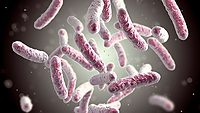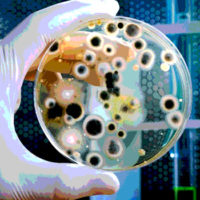The Evolution of Food Testing: A Pioneer’s Perspective

In many quarters of the food industry, the “Silliker” name is synonymous with food testing and with good reason. Dr. John H. Silliker opened Silliker Laboratories in 1967 with three full-time technicians, a temperamental autoclave and a dream. Today, with 27 laboratories in 11 countries, Silliker, Inc. is widely recognized as one of the preeminent food testing and quality assurance organizations in the world.
 A pioneer in Salmonella research, Dr. Silliker worked for nine years at Chicago-based Swift and Co., rising to the position of chief microbiologist and associate director of research, before founding Silliker Laboratories in south suburban Chicago Heights, IL. During his long and illustrious career, Dr. Silliker served on the International Commission for the Microbiological Specification for Foods (ICMSF), the National Advisory Committee on Microbiological Criteria for Foods, and was an early proponent of the Hazard Analysis and Critical Control Points (HACCP) system.
A pioneer in Salmonella research, Dr. Silliker worked for nine years at Chicago-based Swift and Co., rising to the position of chief microbiologist and associate director of research, before founding Silliker Laboratories in south suburban Chicago Heights, IL. During his long and illustrious career, Dr. Silliker served on the International Commission for the Microbiological Specification for Foods (ICMSF), the National Advisory Committee on Microbiological Criteria for Foods, and was an early proponent of the Hazard Analysis and Critical Control Points (HACCP) system.
The International Association for Food Protection (Harold Barnum Award), American Academy of Microbiology (Fellow), Institute of Food Technologists (Fellow) and NSF International (Lifetime Achievement Award for Research) are among the leading scientific organizations that have recognized his numerous contributions to food science. Now semi-retired, Dr. Silliker, the author of more than 80 publications, serves as a senior consultant for Silliker, Inc.
Dr. Silliker recently spent some time with Food Safety Magazine to share his insights on issues and trends in today’s food testing industry.
Food Safety Magazine: In your opinion, what are some of the major factors that have greatly contributed to the tremendous growth we have seen in the food testing industry?
Silliker: When I started Silliker Laboratories, the food testing industry—if you call it an industry at that time – was basically comprised of a small number of private laboratories that primarily performed chemical testing. Silliker was strictly devoted to microbiology testing back then, which made us something of a novelty. Dairy producers, under the Pasteurized Milk Ordinance that was originated in the mid 1920s, were required to perform standard plate counts under intense regulatory inspection and many companies had on-site testing rooms where trained technicians dutifully ran these tests.
In the early 1960s, with the hiring of James Goddard as commissioner of the U.S. Food and Drug Administration (FDA), food safety in the U.S. entered into a protracted period of change and modernization. During this period, as the country experienced escalating incidents of foodborne illness due to salmonellosis, it became increasingly evident that clinical methods, which were widely used at the time, did not provide the accuracy or reliability needed for the identification of Salmonella. Clinical methods were particularly ineffective in isolating debilitated or injured pathogenic cells in food products.
Goddard, along with a host of leading scientific groups, championed the development of microbiological methods to address this issue and improve safety standards in the United States. A couple of years later, the FDA declared that that there shall be no Salmonella in processed foods, and this decree placed the food industry on its ear.
We were still learning much about Salmonella in the 1960s, and to compensate for this learning curve numerous food companies started testing everything under the sun for Salmonella to meet the FDA mandate. The agency was vigilant in collecting incredible number of samples from plants and if the agency found any evidence of Salmonella the product was subject to seizure. As a result of this, many well-known products had to be removed from the market. Needless to say, this led to plenty of consternation in the food industry and had many bewildered companies asking how many samples must they collect.
The National Research Council Committee on Salmonella was appointed to study this problem. The report of this committee included sampling plans for various categories of foods based upon risk. For example, the most critical products required the analysis of 60 25-gram samples with all having to be negative to meet the criterion for safety. Obviously, this was a cumbersome and extremely expensive requirement. Silliker Laboratories, working under an USDA grant through the ICMSF, demonstrated that large composite samples, comprised of multiple 25-g samples, could be analyzed to obviate the necessity for large numbers of 25-g samples. The four 375-g composite sampling program—as opposed to 60 25-gram samples—for the most critical category that was later approved by the FDA was the culmination of this research.
Without question, the FDA’s decree on Salmonella was one, if not the, defining event that paved the way for the immense growth we have seen in the food testing industry. In succeeding years, as analytical food testing continued to evolve both in scope and sophistication to meet new safety challenges posed by E. coli and other emerging pathogens, testing laboratories flourished geographically across the nation to serve the booming food industry.
The tremendous growth that we have enjoyed has allowed us to attract some of the brightest, best, and most industrious minds to work in our industry, and this is another critical factor that has greatly contributed to our expansion.
Food Safety Magazine: What significance has the recent advent of ISO accreditation played in the food industry?
Silliker: At the dawn of the 1990s, many of our foreign trading partners had laboratory accreditation systems, but we did not have an accreditation system in the United States. With the rapid expansion of the global food market, it became increasingly clear to those of us in the food testing industry that proactive measures were needed to fill this major and troublesome void.
This occurred in 1996 when the Microbiology Food Laboratory Accred-itation Working Group (FLAWG), an ad hoc group led by my friend and colleague Russ Flowers, undertook the enormous task of developing accreditation criteria based on guidelines that were forged by the highly respected International Standards Organization (ISO). Due to the landmark efforts of FLAWG, ISO 17025 serves today as the basis of laboratory accreditation for food testing laboratories in more than 35 countries. Around the world, ISO 17025 accredited laboratories employ recognized standardized methods and adhere to management and technical requirements to ensure the validity, integrity and consistency of analytical results.
ISO accreditation has played an important role in minimizing testing discrepancies and disputes among trading partners and serves as an international benchmark for excellence. It has raised the quality bar in the food testing industry and, to a certain degree, heightened the competitive stakes among food testing providers. Food companies, both here and abroad, readily acknowledge that a certificate of analysis from an ISO accredited laboratory provides them with greater confidence that their data can withstand the most intense scrutiny of regulators around the world.
Food Safety Magazine: How has the role of food testing labs evolved over the years?
Silliker: Needless to say, the food industry has changed dramatically over the past five decades, and the food testing industry has evolved with it. HACCP, increased regulatory oversight, consumer advocacy groups, global supply chains, emerging pathogens and countless other measures have resulted in the food industry placing a higher premium on minimizing microbiological, chemical and physical risks in the manufacture of products.To accomplish this objective, processors, retailers, foodservice companies, and distributors are increasingly seeking the assistance of food safety organizations to help them establish effective environmental programs, verify their sanitation standard operating procedures, and understand the implication of new regulatory actions on their products and processes. Over the years, many laboratories have augmented their analytical testing services with safety and quality initiatives ranging from HACCP consulting to educational short courses to help the food industry meet greater regulatory and consumer safety demands.
While diversification is surely a good thing, diversification just for the sake of taking advantage of new opportunities is not. Food testing laboratories should be wholly committed to providing their customers with the best possible services, and hiring and retaining skilled professionals that can help companies meet the rigid demands and challenges they confront on a daily basis.
I remain steadfast in insisting that there is no substitution or replacement for experience and knowledge in the application of food science. When a plant wants to know how an allergenic substance got into their production line or why their environmental control program is not yielding reliable data, scientific theory espoused by unseasoned professionals will not elicit great confidence from companies. Therefore, it is extremely important for food testing laboratories to employ experienced professionals who know their way around a processing plant, understand the many intricacies of HACCP, and possess a thorough knowledge of Good Manufacturing Practices (GMPs) to conduct a meaningful and productive employee training workshop.
It is one thing to hang out a new shingle; having the expertise, experience and credibility to support that shingle is imperative in gaining and keeping the respect of the companies you serve.
Food Safety Magazine: What are some of the major challenges that will “test” food testing providers in the years ahead?
Silliker: At this stage in my career, I find myself on the receiving end of this type of question on a semi-regular basis and I wish I could provide you with a profound answer worthy of Socrates. If there is one thing that I have learned in 50-odd years of food microbiology it is that it is wise to leave the prediction business to the folks who make a living at it in Las Vegas.
Gazing into a crystal ball in an attempt to forecast what will be our next major analytical or safety challenge is an intriguing, though often futile, exercise that I attempt to avoid at all costs. I do this because our past experiences with Salmonella, Listeria monocytogenes and E. coli O157:H7 have taught us the unforgettable and valuable lesson that the food safety landscape is susceptible to momentous change virtually overnight.
Somewhere a long time ago I read a quote that stated that no commodity in society is more important than food; that without it, civilization as we know it would cease to exist. In partnership with the food industry, we bear the enormous responsibility of protecting the safety, quality and nutrition of food products for consumers. With this as our guiding light, food testing laboratories must continuously invest in new technologies, research and training to ensure they are properly prepared to take on new and unexpected challenges that history has shown us are inevitable.
Looking for a reprint of this article?
From high-res PDFs to custom plaques, order your copy today!





